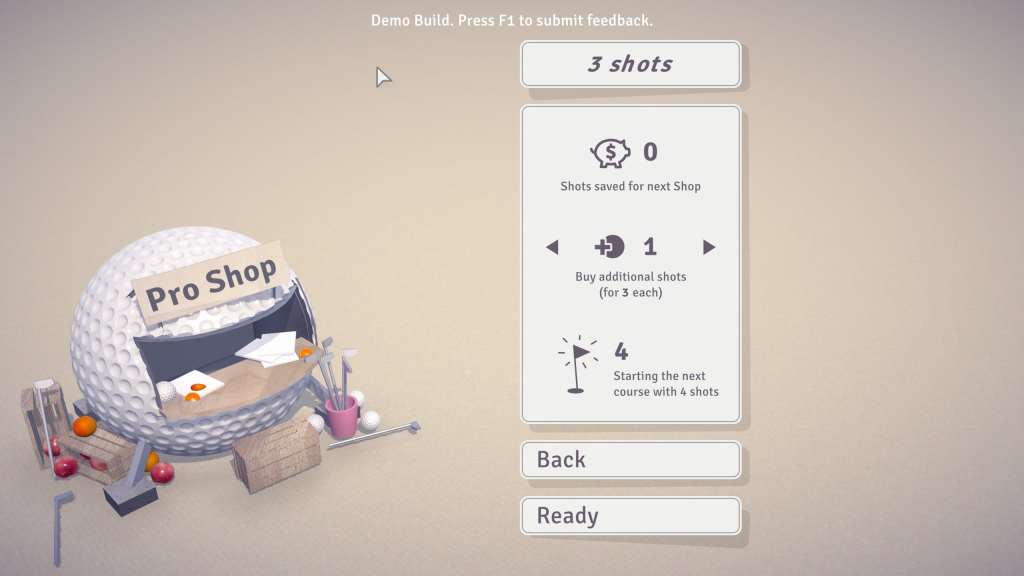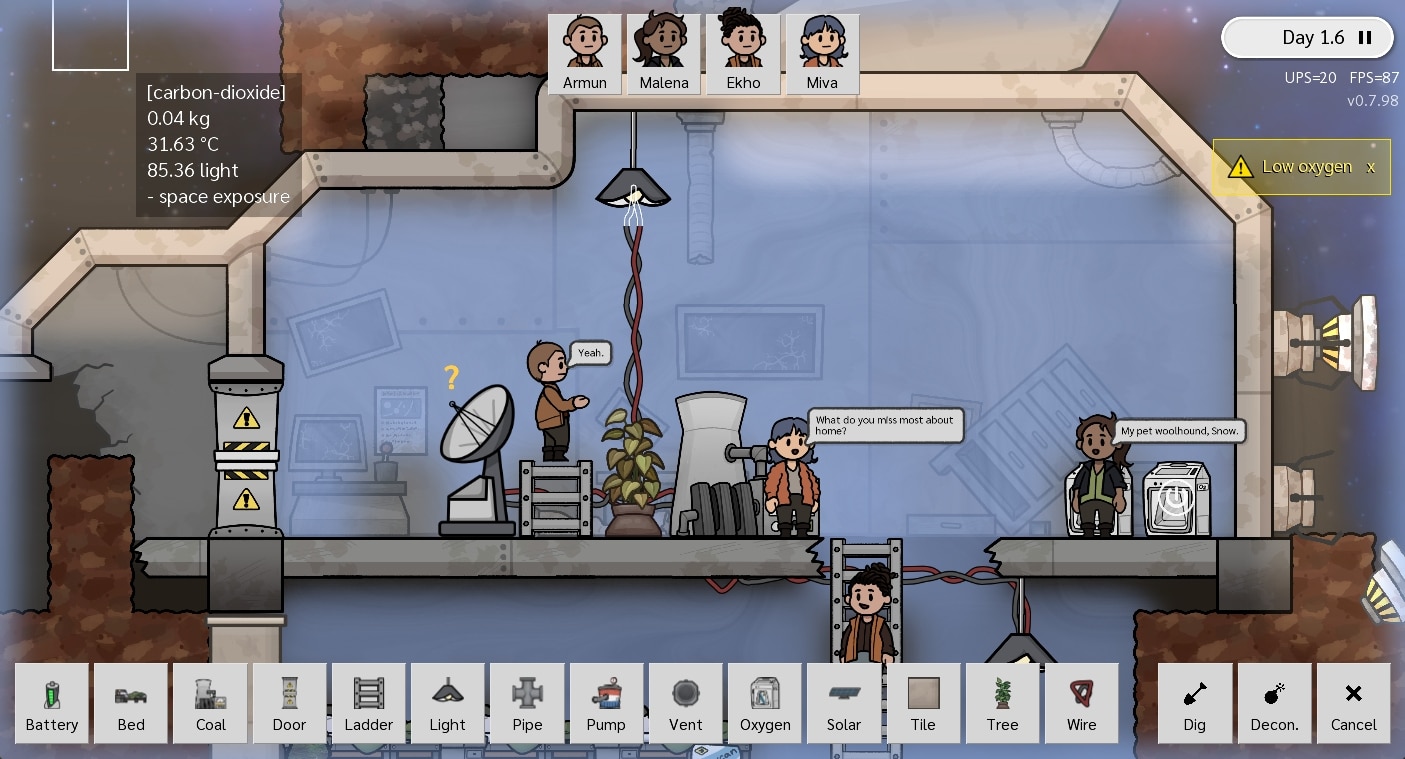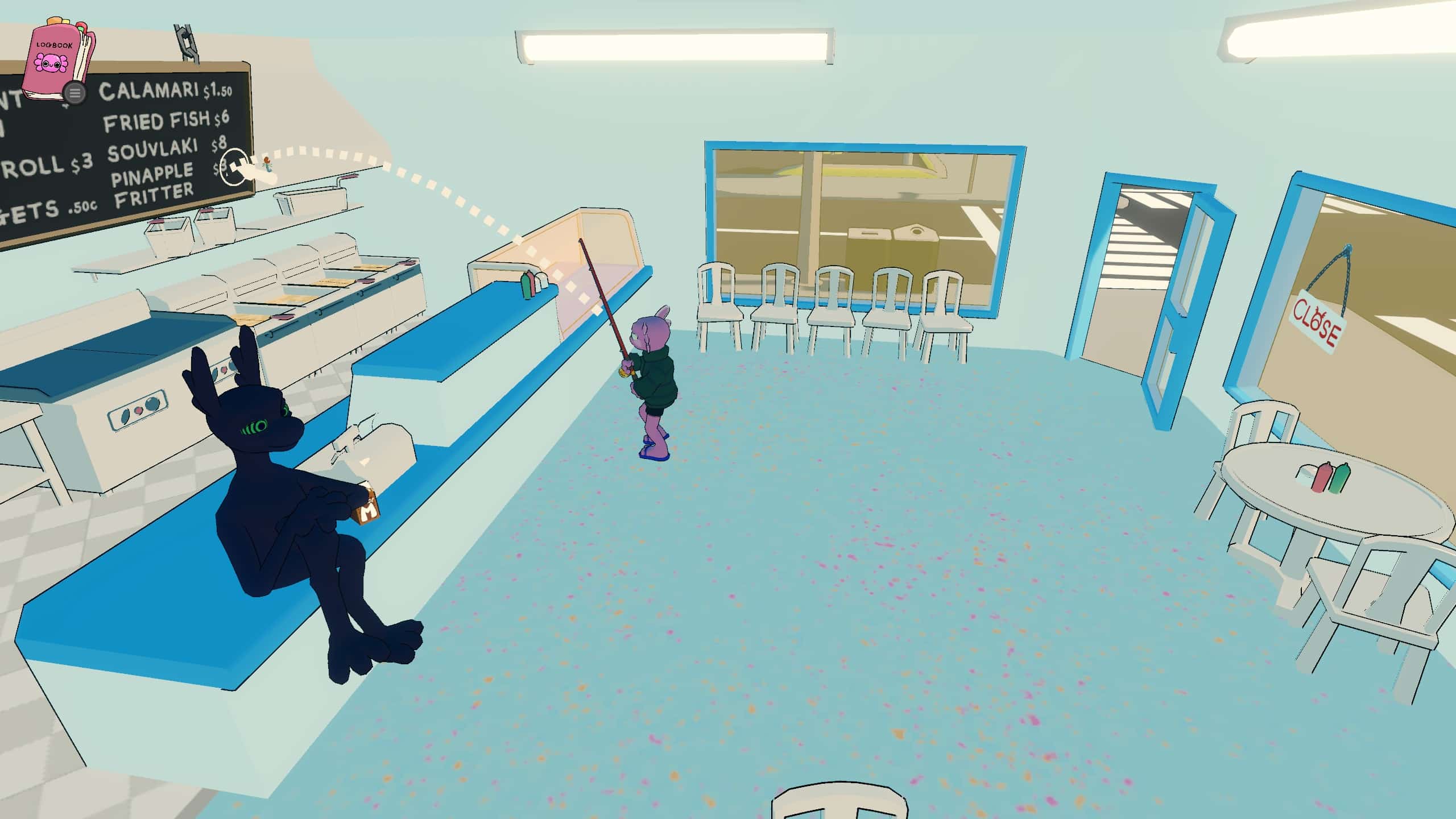For ten years, PAX Aus has been showcasing independent games through its PAX Rising and PAX Indie Showcase areas, mostly featuring games made by small teams from Australia, New Zealand and South East Asia. These games have increasingly become more numerous, and harder to count.
This year, my son and I counted 139 indie games. We excluded some, mostly when we couldn’t find a developer to talk to, but we included others that people just whipped out in the corridor. They were vibrant, clever and endlessly fun.
In curating the best ones to share with you, I’ve prioritised a variety of games with free, public demos, so that you can play along. I also played these games in a lot more detail after returning home from the show.
PAX Aus 2023: Demo Highlights
Crash Course Builder

Thank goodness I didn’t embarrass myself by playing Crash Course Builder at PAX Aus. It’s hard. However, I have never enjoyed something (I’m so bad at) so much. This is a neat, responsive twitch racer, in which you navigate five columns, avoid hazards, and careen through the air, then fail, and try again. Hitting a bomb ends the run, except if you can keep your lifeless crash test dummy bouncing, or airborne, until the end of the level.
It’s also a rhythm game. Faster tempos increase the difficulty, bulbous pads will propel you twice the number of metric subdivisions as flat, and so on. In most handcrafted levels, interaction, like being smacked by a hammer, happens on the beat, or to foreshadow a significant musical section change. Creators seem to be structuring their levels this way too, yet I spent my time in the editor arranging (both music and gameplay) elements, just to feel how things worked in unlikely rhythmic locations.
Read: Amberial Dreams is a clever musical physics platformer with no jump
As a musician, the ‘build’ part of Crash Course Builder astonished me. Programmer and designer, Brendan Watts, explained, “We wanted players to create dynamically paced courses, mixing and matching parts of a song, free from limitations.” So, instead of aligning gameplay pieces to an entire song, you first organise musical segments to make a song, via three axes of decision-making. Original music, by composer Cosmochild, is presented as macro linear segments, A1, A2, B1, and low, medium or high intensity. Then, a choice of ‘speed’ drives how subdivisions are arranged onto the grid, and how meter is experienced.
OK, it’s hard to explain, but easy to experiment with. If you’re not a musician, you’ll make levels that sound good and are fun to play, I promise. Personally, I wanted to try ‘air time’ on offbeats, and ‘floor hazards’ on beats, and one track in particular, 8086 Dreams, was the perfect mix of 2s and 3s, to result in accidentally even more difficult levels than I’d originally struggled with. Approach Crash Course Builder sensibly; enjoy rocking out to left/right movement and joyful flight. As the meme states, “It ain’t that deep.” (Although, wonderfully, it can be.)
Play the Crash Course Builder demo on Steam
Up to Par


Nothing can evoke reluctant delight quite like a witty golf game. Consider Brendan Keogh’s Putting Challenge, in which you chip all of your balls into the same water trap, then have to sheepishly traverse 53 screens to explain yourself to the golf shop attendant. Or, in Party Golf, playing with erratically bouncy banana-shaped balls. The fact that Up to Par put an immediately genuine (not even angry-polite) smile on my face is, frankly, incredible.
Really, this is a perfect rogue-lite experience, just … expressed as golf. Each hole, constructed (initially) from randomly placed squares and triangles, is par 3, but if you can sink the ball in fewer shots, excess will be added onto ‘par’ for the next hole. Fail to achieve par (or run out of shots) and your run will end. Every 6 holes, you can use excess shots to buy useful consumables, like chances to retake your shot if the ball bounces out of bounds, or persistent buffs, like an additional shot added, for a hole-in-one.
Read: ‘What The Golf?’ sequel ‘What the Car?’ is unsurprisingly absurd
There are various motivations for choosing either a risky or conservative approach. After each shop, excess shots are banked (to spend at the next shop), but your shot count resets to 3, making the incrementally more complex holes numbered 6x+1 especially challenging. Most cleverly, as you unlock buffs, the game doesn’t get easier overall, because later holes unlock the potential for more challenging level pieces to be placed, like a bridge that opens and closes, or curved ‘city’ walls.
Thanks to the intoxicating, impossible promise of ‘one more hole’, this is quite possibly the first time I’ve ever been motivated to improve at video game golf. Or any kind of golf. For solo developer, Philip Buchanan, I had exactly one question; “Rogue-lite mini golf, what were you thinking?” He said, “I wanted a little more golf, but accidentally ended up with infinite golf.” Before Up to Par, if you’d asked me if I wanted to play golf infinitely, the answer would have been ‘no’. Now, I’m not so sure.
Please note. Up To Par has various multiplayer options. I just wanted to play it by myself, as if it were Darkest Dungeon.
Play the Up to Par demo on Steam
Adaptory

Each year, there’s exactly one indie at PAX Aus that I just want to play now. This year, that game was Adaptory. I recently had a fervent, but short-lived, engagement with Oxygen Not Included, which is so detailed now, it’s difficult to learn from scratch. By contrast, I played RimWorld from its first release, and was able to stay ahead of new content. Adaptory is extremely early. There’s a liquid pump but (presently) no use for water. Yet, in a small corner of Discord, people are beginning to download the build, and share ideas and feedback.
I usually associate ‘colony sims’ with emergent storytelling, where I’ll have a quiet interpretation of events happening in my head, alongside self-directed goals, yet Adaptory’s characters talk. Often, their speech bubbles contain conversations about home, crashing the ship, or their mission; to explore the galaxy. Other times, pawns comment in a pleasantly fourth-wall-breaking fashion about their needs, like a room being too dark. And, there are alien artefacts to find.
Read: Cult of the Lamb, Clanfolk, and moving on from the legacy of Rimworld
My imagination immediately went to how much I would like to combine the mechanical complexity of Oxygen Not Included with the semi-explicit storytelling of Out There. However, this blog also explains how Adaptory’s character development, via relationships and diary entries, might play out in more of a procedurally generated way, like in Wildermyth. I asked designer and developer, Jevon Wright, about the role story might eventually play. She said, “Each member of your crew has a unique personality; traits, backstories, and ways to express themselves,” and I’m most interested in the idea that “expression” includes actual words.
Another PAX Aus indie that once captivated me in its earliest stages was Broken Roads in 2019, and I’m now hoping to review it, in just a few weeks time. I have my fingers firmly crossed that I’ll be telling you about Adaptory again, in the future. The demo is tiny, but it has sated my initial enthusiasm, for now.
Play the Adaptory public alpha
Student Showcase – Bell’s Beach, Massage Maestro, and House Hunting
My criteria for counting an indie game at PAX Aus is to see gameplay and to talk to a developer. As such, I heard a great many elevator pitches. Which were the best? Those delivered by students. Students explain their games concisely and with great enthusiasm. Their games are also usually limited in scope, and often focused on one clever idea.

Bell’s Beach reeled me in with its “ludicrous locations” for fishing. RMIT student William Mitchell, said, “We wanted to make a game about childhood memories, set in Victorian coastal towns, and what’s a coastal town memory without some sort of ethereal fishing experience?” I mean, yeah, I went fishing as a kid. I picture my dad being unimpressed if I had tried to cast a line into someone’s esky, though.
Play the demo for Bell’s Beach on itch.io

I don’t actually think the Massage Maestro developers, also of RMIT, even gave me an elevator pitch. Their game was entirely self-explanatory; provide a physically therapeutic massage, through sensitive piano performance. Feedback on how the player is doing is delivered via facial expressions that range from blissful to terrified. I was most interested in the potential to improvise over the top of the background music, in a way that wouldn’t piss this guy off.
If you have a pressure-sensitive MIDI keyboard to hand, a demo of Massage Maestro is available on itch.io.

Another notable mention is House Hunting, of Swinburne, which involves “hunting sentient furniture to decorate your house”. Designer Ethan Franks explained his group’s concept as, “Skip the part where you harvest wood to make the couch and just shoot the couch.” I feel there’s an important point to be made about sustainability here, but I have no idea what it is. This remains in development, with “furniture animations” still to come, so perhaps we will find out.
Play the demo of House Hunting on itch.io
Well done, students. I was impressed by how well you articulated your clever ideas – and alliterated your games’ titles.
Solium Infernum

Solium Infernum had me at its colour palette. Do I want to play a turn-based strategy game that is (almost) entirely grey and red? Yes. Why? I don’t think I’ve ever done so before. It’s striking, and weird. The public demo is 4.6GB, but for good reason. The production values are intense, from spatialised thunder to a UI one could become forever lost in. My laptop swiftly reached an appropriate temperature for a game set in Hell.
Where to start? There are legions to command, cantons to capture, tributes to demand, creepy currencies to manage, artefacts to bid for, praetors to promote, and a great many other statistics to manipulate. ‘Schemes’ are like making promises (perhaps to capture a specific location) in exchange for victory points. You can declare a scheme publicly for a greater reward, and risk others trying to stop you, or keep it private.
Read: League of Geeks talks Jumplight Odyssey, Solium Infernum, and learning as a studio
Yes, there’s combat, but to attack an archfiend’s legion (not even their stronghold), you need to engineer a vendetta by making an unreasonable demand, then set its terms (what you will do and in how many turns), then wait for relevant bureaucratic processes, check by-laws and … What’s that? I’m reaching my word limit? That means you’ll have to play the demo and learn all of the rest for yourself. The intricacy here is too preposterous to try to document anyway. But, the tutorial is very good. It gave me a headache.
In summary, imagine this is 100 variations on Settlers of Catan (some of them very wild) that you play all at the same time. And remember, in the afterlife, if you’ve been good, you get rogue-lite golf. If you’ve been bad, you get Solium Infernum for the requisite time it will take to learn to play; eternity. If this sounds fun, I’ll see you in Hell.
Play the Solium Infernum demo on Steam
I hope you’ll enjoy playing something from PAX Aus in 2023. Having conscientiously counted indie games every year, it has been an immense privilege to witness this burgeoning period for local game development. Students have become developers, “Triple-I” behemoths have emerged from smaller studios, and special games have finally made it to release. I’m excited about what the next ten years might bring.





